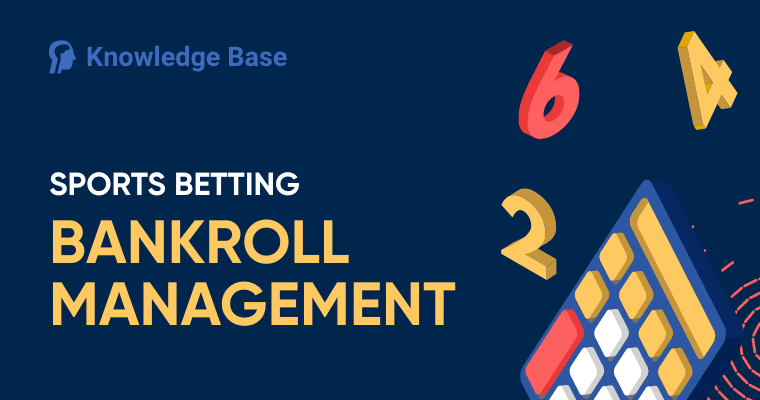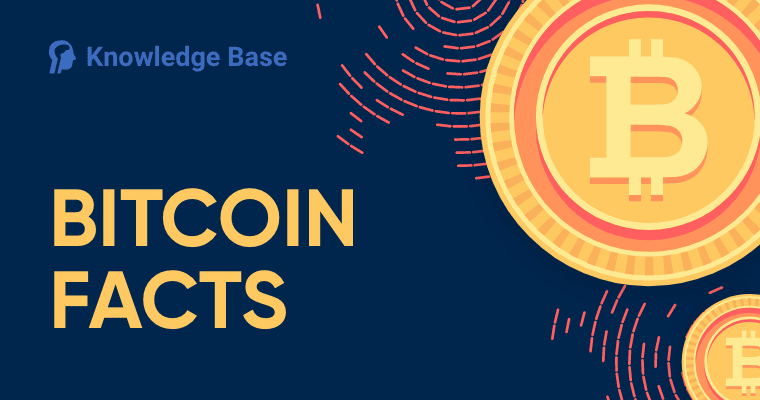How Do Bitcoin Transactions Work?
You probably have plenty of questions about Bitcoin – most people do. Cryptocurrency and its underlying blockchain technology are challenging technical concepts, even for people who write computer code for a living. If you find the concept of cryptocurrency confusing, you are not alone. Luckily, you can use this technology and reap the benefits of cryptocurrency without mastering the technology. You should, however, understand how transactions work. So that’s where we are starting: How do Bitcoin transactions work?
The Rundown
Transferring Bitcoin funds from one user to another begins with the submission of a transaction request. This can be done on your computer or via a mobile app. Nodes – other computers on the blockchain network – verify the transaction details. Bitcoin transactions consist of three separate elements – input (sender), header (transaction and funds information), and output (recipient info).
Once these elements are verified, the transaction is approved, the funds are transferred, and the transaction becomes part of Bitcoin’s public ledger. Each transaction undergoes 6 confirmations before being fully verified. The whole process can take from 10 minutes to 16 hours.
You might get the impression that this electronic process is easy to tamper with. But the beauty of Bitcoin is that its transactions are foolproof. The system cannot be tricked by third parties because the Bitcoin transaction process relies on blockchain technology and has strict authentication requirements.
This general overview of Bitcoin transactions serves as a great starting point for the more complex technicalities involved in the process.
Diving Deeper Into the Transaction Process
Wallets and keys: All BTC transactions are transfers between Bitcoin wallets. These cryptocurrency wallets don’t actually hold your Bitcoins. Instead, they store your public and private cryptographic keys, which keep a record of all your transactions. Your public key is also known as your address on the Bitcoin blockchain – a string of 34 characters that is visible to everyone.
The public key does not undermine your security or threaten your funds. That’s because each public key has a corresponding private key that consists of 64 characters. You need both the public key and the private key to decode a message – which is essentially what a transaction is.
The sender needs only the public key to identify the recipient of funds. The message can be decrypted – the funds received – by the person with the corresponding private key. So it’s crucial that your private key stays private. Anyone who has access to your 64-character private key also has access to your Bitcoin funds.
The Bitcoin economy relies on wallets and keys to collect and verify Bitcoin transaction info. Wallets are often implemented as utility programs that store information and handle data transfer with Bitcoin’s underlying blockchain, a distributed database with thousands of copies.
We recommend using a trusted wallet. There are many horror stories about people accidentally throwing away hard drives that contain small Bitcoin fortunes because they relied on software to store their private keys and didn’t have copies written down elsewhere.
Each BTC transaction has to be signed in order to be valid. The Bitcoin software creates a digital signature based on your private key and the transaction details. This signature acts as proof that you own the private key (without revealing it to anyone on the network) and protects you from potential tampering. Your Bitcoin transaction info is verified, and all of the nodes on the network make sure you authorized the transaction without any risk to your security and funds.
Nodes: Transactions are verified by miners running full nodes. The Bitcoin network is not overseen by a central financial institution that regulates transactions – that’s one of the revolutionary ideas behind Bitcoin.
The network is a peer-to-peer system where nodes perform crucial maintenance roles. Full nodes are run by volunteers who use their computers and bandwidth to perform vital functions. By scanning, validating, and distributing copies of the blockchain ledger, they act as a Bitcoin transaction checker.
Blockchain and hash functions: This is where it gets interesting. You can think of the blockchain network as a distributed database. It’s essentially a set of transaction ledgers distributed across the whole network. The nodes hold copies of the ledger and verify the validity of transactions by checking previous ledger entries.
Each transaction from the first genesis block onward is recorded in the blockchain. All transactions are documented through hash functions – decrypted pointers to the previous block in the chain.
Each new blockchain transaction contains the hashed details from previous transactions. If someone attempted to tamper with transaction details, he would have to calculate new cryptographic hashes and change them in all the previous entries. As an additional layer of security, a nonce is added. This arbitrary number can only be used once in a cryptographic communication, and it makes all hashes end in two zeroes. Any malicious actor attempting to trick the system would not only have to change all previous hashes but figure out the nonce numbers.
Even if someone actually managed to change the whole blockchain in order to fit in their faux transaction, they still wouldn’t be able to trick the system – thanks to nodes.
Numbering around 10,000 worldwide, nodes are PCs on the Blockchain network that scan all transactions and compare them with their own copies of the blockchain. The process ensures the validity of all Bitcoin pending transactions. Once the nodes are done with their scanning, a digital vote of sorts takes place. If a majority are satisfied that the transaction is legit, it’s approved, and the funds are transferred.
A ledger sheet holding about 3,500 transactions is called a block. The whole system of interconnected blocks is a blockchain. Blocks are updated automatically every 10 minutes, after which no changes can be made retroactively.
We started by asking how do Bitcoin transactions work. By now you should have a much better understanding of this complex process. Blockchain technology is usually the hardest part to grasp. Here is a quick recap of how blockchains work.
- The Bitcoin blockchain is a distributed network of ledgers containing Bitcoin transaction data.
- One block is one spreadsheet of about 3,600 transactions.
- The system of interconnected blocks is called a blockchain.
- All Bitcoin transaction details come in the form of cryptographically generated 64-character sequences generated by a hash function.
- Even the slightest adjustments to any bit of data produces a wholly different hash, serving as protection against tampering.
- Inputs to the hashing function include the hash of the previous block on the chain, which means that any attempted modification would be visible immediately. A nonce is added to make retroactive changes even harder.
- All Bitcoin transactions are validated by nodes that verify the integrity of the transaction by comparing it to their copies of the blockchain.
- Live Bitcoin transactions are approved when the nodes agree that it’s legitimate.
- The blockchain is automatically updated every 10 minutes, after which no changes can be made to previous transactions.
Elements of Every Bitcoin Transaction
Now that we’ve demystified blockchain technology, we can look at specific elements of each Bitcoin transaction.
Input and output: Your e-wallet doesn’t hold your Bitcoins. Instead, it holds the private key that grants you access to your Bitcoin address. You never actually get your hands on the Bitcoin. You just have proof of transactions – bank statements if you will. Incoming transactions are referred to as inputs.
For example, if someone made a BTC transfer of 5 BTC to your address, the sender’s address will be registered on the network as an input, while your address will be registered as the output. The input serves as proof that you received 5 BTC.
Suppose you want to send 4 BTC of the sum you just received to someone else. First, your address is registered as the input and the recipient’s as the output. But how can you send 4 BTC when you have an input showing you received 5 BTC? The input cannot be cut to 4 BTC. Instead, 5 BTC will be sent through the system, and the 1 BTC minus mining fees will be refunded to your address after the transaction.
This refund is processed by the network and sent to another one of your addresses. This inevitably leads to your wallet having multiple addresses from the sheer number of Bitcoin transactions. Once you submit a transaction request, the software combines different addresses to get the necessary amount of funds for the transaction. Although it’s possible to handle all of this manually, in practice, everyone uses an e-wallet.
How to Send Funds Through Bitcoin Wallet Software
Now that you have all the theoretical knowledge about Bitcoin transactions, let’s see how a transaction is conducted in practice.
Step 1: Open your Bitcoin wallet software.
Step 2: Obtain the recipient’s wallet address. You can copy it or scan the QR code.
Step 3: Enter the amount you wish to send and the miner fee. The fee serves as an incentive for miners who confirm Bitcoin payments and add them to the blockchain. Most e-wallet software automatically suggests the appropriate miner fee.
Step 4: The mining process starts calculating a hash.
Step 5: Miners add the transaction in the next block to be minted.
Step 6: Transactions sit in the so-called mempool. Here, pending transactions wait for miners running full nodes to add them to the block. Miners decide which Bitcoin live transactions get processed first based on the allocated fees.
Step 7: The transaction is validated by nodes.
Step 8: Wallet software signs your transaction using your personal private key.
Step 9: The first miner whose mining rig solves the necessary mathematical puzzle adds the block, including your transaction, to the network.
Step 10: The nodes verify and propagate the block to the network.
Step 11: The recipient sees the first confirmation of the transaction.
How Long do Bitcoin Transactions Take?
With the process of a Bitcoin transaction explained, let’s have a look at how long the procedure takes. There are two main factors influencing processing time: the number of transactions and the miner fees. So why do Bitcoin transactions take so long?
Bitcoin transactions can take anything between 10 minutes and 24 hours. Longer processing times come during periods with high trading volumes. This is often caused by turmoil in the Bitcoin market or the economy in general. Since the number of miners is finite, a high number of transactions leads to longer waiting periods.
Most of the time, miner fees determine how long you wait for your transaction to get processed. Knowing how the whole Bitcoin system works is crucial to understanding how miner fees affect the Bitcoin confirmation time.
Bitcoin’s most important characteristic is that it’s decentralized. With no central financial institution supervising and regulating the system, the Bitcoin network relies on P2P and a group of volunteers to keep the system up. Running nodes and mining are done by individuals with no hierarchical system in place.
However, that doesn’t mean they’re not compensated for their work. When sending Bitcoins, we pay an extra fee that incentivizes miners to add our transactions to blocks. Higher fees motivate miners to prioritize individual transactions.
What is Bitcoin Mining?
So: How does Bitcoin work? A major aspect of the whole Bitcoin ecosystem Bitcoin mining. This crucial practice injects new currency into the market.
Mining refers to a voluntary practice in which miners running nodes on the blockchain mint new blocks to which they add upcoming Bitcoin transactions. Miners devote the processing power of their computers to solving complex math problems that are too complex for humans to do manually.
The system relies on a method called proof of work. It ensures that the process of mining new blocks is difficult enough to preserve the balance of the market. But it isn’t made too difficult, so as not to discourage people from participating or slow down transactions.
Given that there are thousands of Bitcoin transactions per day, miners perform a crucial role in this economy. Mining verifies the integrity of new transactions, adding them to the blockchain. It also produces new Bitcoins that enter circulation.
In addition to miner fees, miners are entitled to block rewards: a portion of the newly created Bitcoin that comes with newly mined blocks.
Mining Difficulty
Mining difficulty refers to how hard it is for miners to solve required mathematical equations. The level of difficulty depends on the number of miners active at any given time. As the number of miners competing to produce Bitcoin hash increases, the system adapts and raises the difficulty levels.
When the number of created blocks decreases due to the level of difficulty or fewer miners, difficulty levels are readjusted. The difficulty is adjusted every 2,016 blocks, which usually amounts to around two weeks.
How do Bitcoin transactions work when it comes to mining? You don’t have to be an expert on the issue, but being educated about mining will help you better understand the overall process and why it’s reliable.
Mining is basically a competition. Miners compete among themselves to calculate the correct hash.
Bitcoin was originally mined on CPUs. But Bitcoin miners quickly realized that they could get more hashing power from GPUs on high-end systems’ graphic cards. Today, the market is dominated by application-specific integrated circuits – computers made specifically for mining. Miners running ASICs usually form mining pools, combining their resources to mine together and split the rewards.
The only efficient method to increase your Bitcoin balance through mining is by investing in ASICs, which can cost up to several thousand dollars. On the other hand, mining simply doesn’t pay off without this technology.
We conclude with Bitcoin halving. This is a process that occurs every 210,000 blocks – once every four years or so. It essentially halves the subsequent rewards gained from completing blocks and the number of Bitcoins produced.
Over time, mining becomes less rewarding, and Bitcoins become harder to obtain. The system exists because there is an upper limit on how many Bitcoins can be mined in total – 21,000,000. But don’t worry. According to estimates, the last Bitcoin will be mined in 2140.
We started by asking, how do Bitcoin transactions work? The information we provided will help you understand this infamously complicated process. With this knowledge, you can step into the revolutionary world digital currency. Even if you aren’t planning to become a miner, Bitcoin can be used for everything from online shopping to gambling – with the added benefit of anonymity. Whatever the future holds for this digital currency, Bitcoin has forever altered our view of currencies and the economy in general.







